Later this year, Intel is expected to launch the 13th generation Raptor Lake desktop processor to compete directly with AMD Zen 4 "Raphael" family But earlier today, @tum_ Apisak just shared the sisoftware benchmark test results of early i9-13900 samples It can be seen that even if the frequency is as low as 3.7 GHz, this engineering sample (ES) chip is 50% higher than the i9-12900.
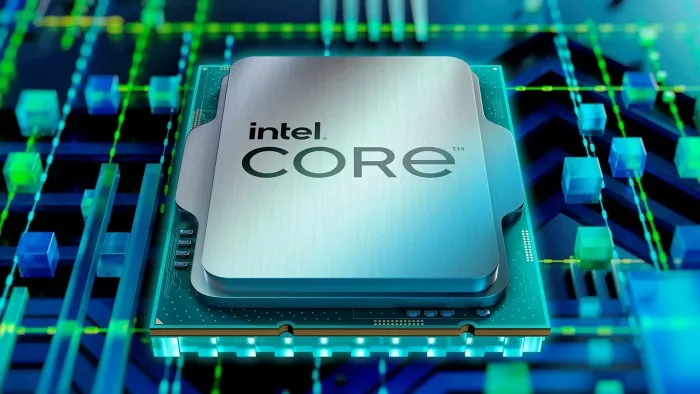
(via WCCFTech From: sisoftware)
It is reported that the 13th generation Raptor Lake desktop processor is manufactured using the optimized 10nm (Intel 7+) process, and combines the high-performance P core (Raptor Cove) + energy-saving e core (gracemont).
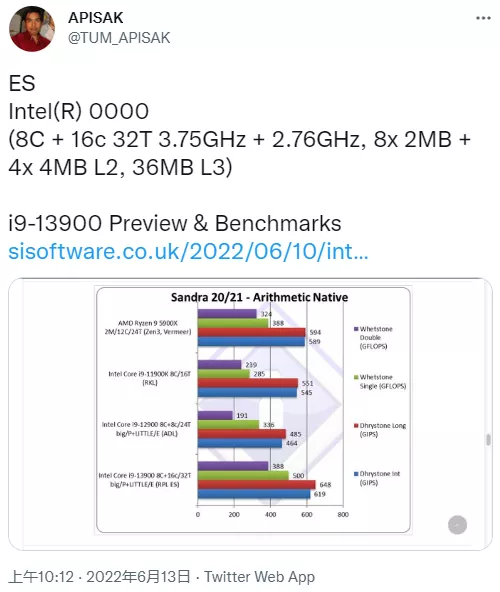
Compared with the previous generation alder Lake CPU, raptor lake not only introduces more cores and improves the clock rate, but also brings the following improvements:
● support ddr5-5600 memory
● increase L3 cache by 20% (up to 36mb)
● doubled L2 cache (up to 32MB)
● energy saving E-core upgrade, supporting AVX / avx2 instruction set.
● cut off avx-512 instruction set support (similar to alder lake-s)

The test chip is i9-13900 of ES version, with 8p + 16e hybrid core architecture design (24C / 32t in total), supplemented by 32MB L2 (P core 8 × 2 Mb / E-core 4 × 4 MB) + 36mb L3 cache.
The E-core and p-core of ES chip can reach 2.76 / 3.7 GHz respectively. However, it is leaked that the retail version of the i9-13900 will have a frequency of 5.5+ GHz,
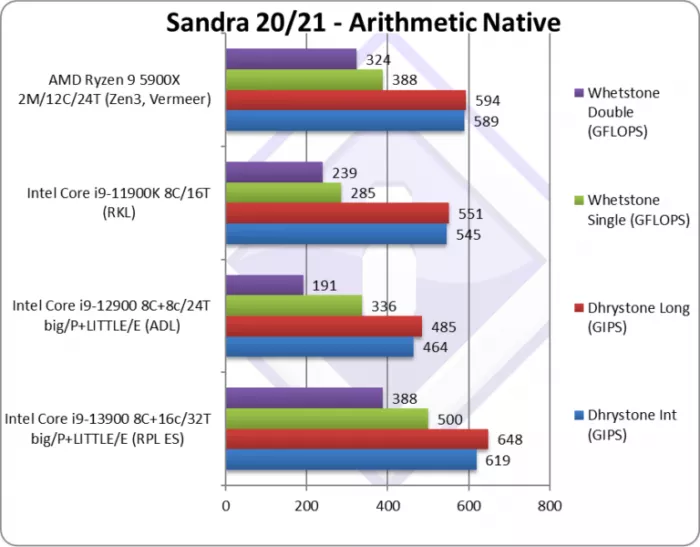
Although the exact test configuration is not disclosed (for example, whether the memory reaches ddr5-5600), we are still impressed by the ES chip with such a low dominant frequency.
In the whetstone fp32 benchmark project, the ES version i9-13900 is still 50% higher than the i9-12900 (twice the fp64 project), and is ahead of the AMD Ruilong r9-5900x competitor.
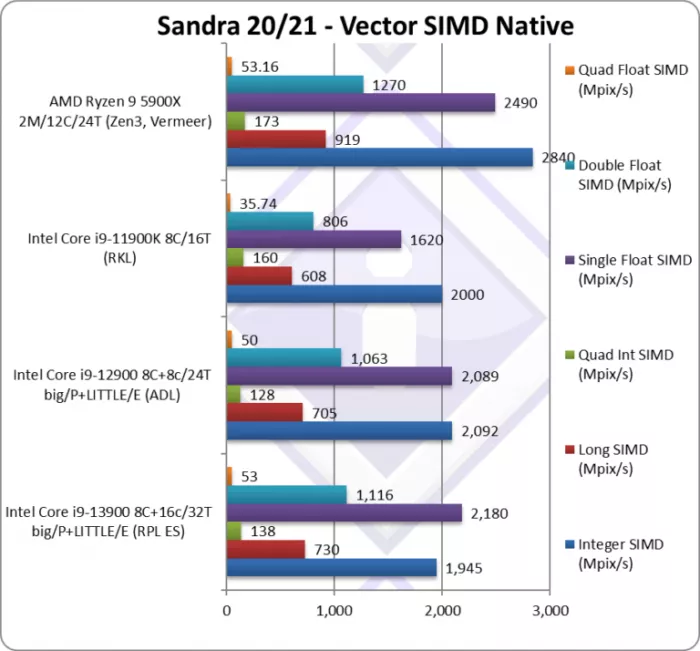
It should be noted that the above results are non SIMD code scenarios. When moving to the SIMD workload section, the overall performance will be affected - at this time, the i9-13900 is only 4-6% faster than alder lake.
Fortunately, after cutting off the avx-512 function that is not available to most users, the Raptor Lake desktop processor finally ushered in a more brilliant overall performance.
Interestingly, amd embraces avx-512 in the next generation Zen 4 CPU, and is expected to reverse crush Raptor Lake competitors in this field.
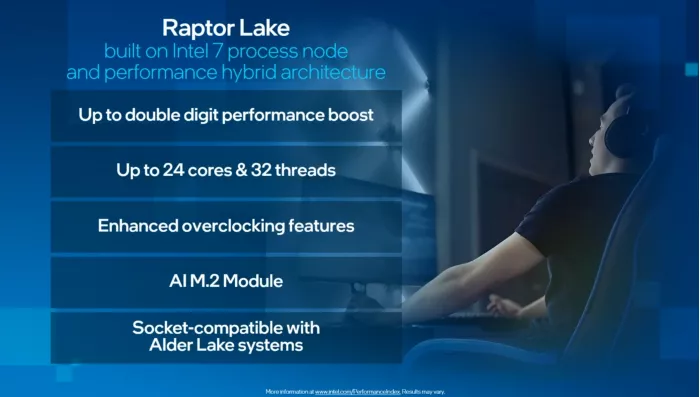
Overall, the performance of the ES version i9-13900 is quite good. When the retail version with higher frequency comes into the market, we still hope to usher in greater surprises.
The following are sisoftware's comments on Raptor Lake:
● in the traditional Alu / FPU test project, raptor Lake shows a 33-50% improvement over alder lake, and this is achieved at a lower clock rate.
● in the re vectorization / SIMD test project, raptor lake is only 5-8% higher than alder lake. This result is very encouraging, but it is not surprising for us. After all, the additional E-core is not the focus.
● the huge L2 (16 + 16 = 32 MB) and the increased L3 cache (up to 36mb) finally make it comparable to or even surpass amd Zen 3 competitors. However, in the face of 3D v-cache and the upcoming Zen 4, the situation remains to be seen.
Finally, if all goes well, Intel will launch the 13th generation Raptor Lake desktop CPU later this year, which is compatible with DDR4 / ddr5 memory and LGA 1700 / 1800 motherboard slots.